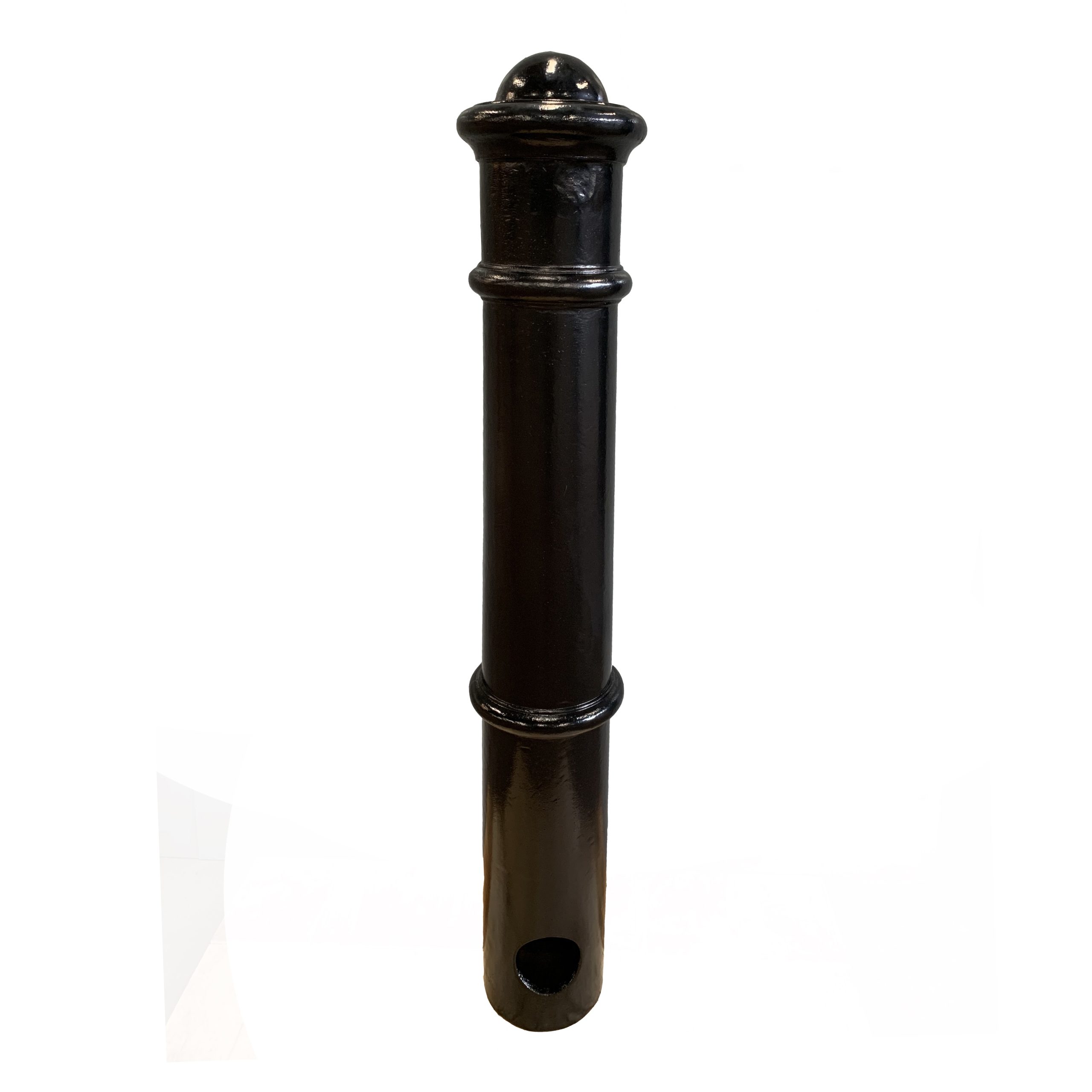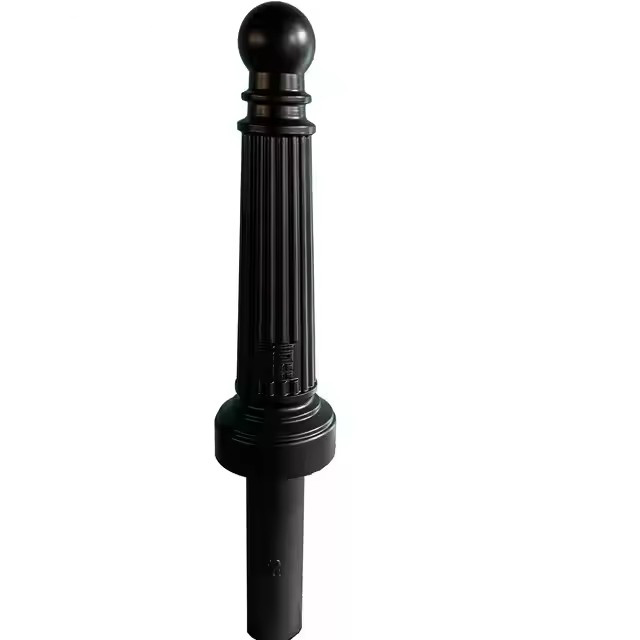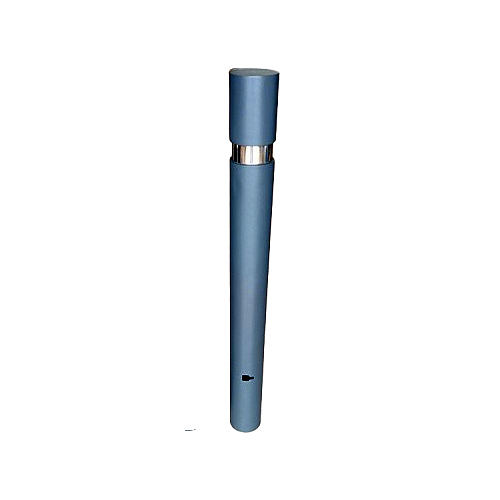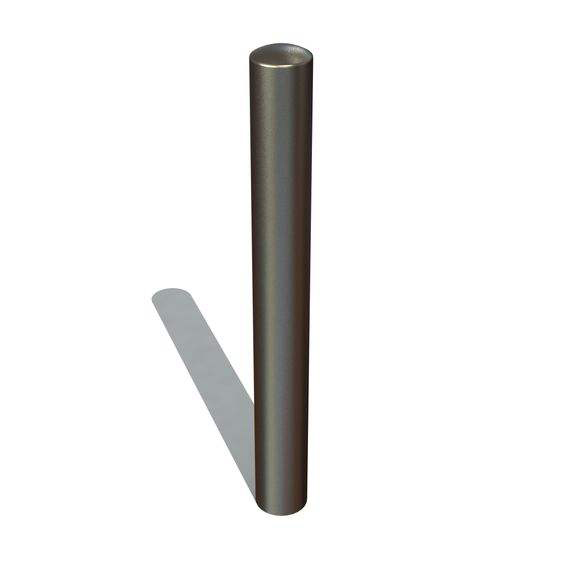How 300 Cast Iron Bollards Solved a Brazilian City’s Street Safety Crisis—Here’s the Full Story
Wondering how a Brazilian city fixed its busy street’s accident problem? It turned to 300 Cast Iron bollards! Unlike plastic (too weak) or steel bollard (prone to rust in humidity), Cast Iron bollard is strong, rust-resistant, and fits the historic area. Installed quickly, they stopped accidents—even a truck! Now the street’s safe, busy, and the bollard still looks great. A simple, smart fix for safety.

What do you do when your city’s busiest pedestrian street becomes a hot spot for accidents? When parents hesitate to let their kids walk to school, and shop owners worry about cars crashing into their storefronts? That’s the problem Maria Silva, a urban planning coordinator in a mid-sized Brazilian city, faced last year. After three months of research, community meetings, and testing different solutions, she landed on one answer: 300 cast iron bollards. But why cast iron? Why not steel, plastic, or concrete? And how did those simple metal posts turn a chaotic street into one of the safest in the city? Let’s break down her journey—and why her choice of bollard ended up being a game-changer.
First, let’s set the scene. Maria’s city, located in the southeastern part of Brazil, has a central street called Rua Principal that’s the heart of the community. It’s lined with family-owned shops, a primary school, and a small park—so on weekdays, it’s packed with kids, parents, and shoppers. But here’s the issue: Rua Principal is also a through street for cars and delivery trucks.
Over the past two years, there had been five accidents: a truck veered onto the sidewalk and hit a bench, a car rear-ended another and spun into a store window, and three times, drivers missed the stop sign and nearly hit pedestrians. The city council knew they needed to act fast, but they weren’t sure what would work. They considered speed bumps, but drivers just swerved around them. They thought about closing the street to cars, but local businesses worried about losing customers. That’s when Maria suggested bollards.
But not just any bollard—she wanted something that would last, look good, and actually stop a wayward vehicle. She started by researching different types: plastic bollards were cheap, but she’d seen them break after a single hit. Concrete bollards were strong, but they were heavy and would be hard to install on the narrow sidewalks. A steel bollard seemed like an option, but Maria worried about rust. Brazil’s humid climate and occasional heavy rains mean metal can corrode quickly—she didn’t want to spend money on bollards that would look worn out in a year. Then, a colleague mentioned cast iron bollards. Maria hadn’t thought about cast iron before, so she dug into it—and what she found made her decide to pitch them to the city council.
Cast iron, she learned, is made by melting iron and pouring it into a mold. That process makes it dense, strong, and resistant to wear and tear. Unlike regular steel, cast iron doesn’t rust easily—especially if it’s treated with a protective coating. It also has a classic, timeless look—something that mattered because Rua Principal has a lot of historic buildings. Maria knew the city wouldn’t want bollards that clashed with the street’s charm. She also liked that cast iron bollards are heavy enough to stay in place without needing deep concrete footings—important for a street where the sidewalks are only a few feet wide.
To make sure she was making the right choice, Maria ordered a few sample cast iron bollards and tested them. She had a local construction team install them outside the city hall, then ran a small test: they used a utility cart to hit the bollards at different speeds. The bollards didn’t move an inch. She also left them outside for two months, through rain and intense sun, to check for rust. At the end of the test, the bollards still looked like new—no chipping, no rust, just a little dust that wiped off easily. Maria was sold. She presented her findings to the city council, explaining that cast iron bollards would be safe, durable, and aesthetically pleasing—and that they’d fit within the city’s budget. The council agreed, and they approved an order for 300 cast iron bollards.
The next step was figuring out where to place them. Maria and her team walked Rua Principal multiple times, mapping out high-risk areas: near the school entrance, where kids cross the street; outside the busiest shops, where pedestrians often linger; and at the corners, where drivers tend to turn too fast. They decided to space the bollards about 3 feet apart—close enough to stop a car from getting through, but far enough apart that strollers and wheelchairs could pass easily. They also chose bollards that were 3.5 feet tall—tall enough to be visible to drivers, but not so tall that they blocked the view of the shops.
Installing the bollards was easier than Maria expected. Because cast iron is heavy, the team didn’t need to dig deep holes—they just dug a small trench, set the bollard in place, and filled the trench with gravel to keep it stable. The whole process took a week, and they worked at night to avoid disrupting traffic and business. When the shops opened on Monday morning, the bollards were already in place—and the reaction was immediate.
One of the first people to comment was Carlos, who owns a bakery on Rua Principal. “I’ve been here for 15 years, and I’ve seen too many close calls,” he told Maria. “Now, when I see those bollards outside my shop, I feel better. I don’t have to worry about a car crashing through the window while my customers are eating.” Parents were also relieved. “Before, I held my kid’s hand so tight when we walked past the school,” said Ana, a mother of two. “Now, with the bollards there, I know there’s a barrier between us and the cars. It’s a weight off my shoulders.”
But the real test came a month later, when a delivery truck lost its brakes and veered toward the sidewalk. The truck hit three cast iron bollards—and stopped. The bollards didn’t break, and the truck didn’t reach the pedestrians who were walking nearby. The driver was shaken but unhurt, and the only damage was a small dent in the truck’s bumper. After that incident, the city council received dozens of emails from residents thanking them for installing the bollards. Maria knew she’d made the right choice.
Six months later, Rua Principal is a different street. Accidents have dropped to zero. More people are walking to the shops and the park, and local businesses say their sales have gone up because customers feel safer. The cast iron bollards still look as good as the day they were installed—they’ve held up to rain, sun, and even a few accidental hits from bikes and shopping carts. Maria has even received calls from other cities in Brazil asking about her bollard choice.
Looking back, Maria says the key to success was choosing the right bollard for the job. “A lot of people think any bollard will do, but that’s not true,” she says. “You need to consider your climate, your space, and what you’re trying to protect. For us, cast iron was perfect. It’s strong enough to keep people safe, it doesn’t rust in our humidity, and it looks good with our historic buildings. A steel bollard might have worked, but I know it would have needed more maintenance. Plastic or concrete? They just wouldn’t have held up.”
She also emphasizes that bollards aren’t just about safety—they’re about making a street feel welcoming. “When people see well-designed, sturdy bollards, they know the city cares about their safety,” she says. “It makes the street feel like a place for people, not just cars. That’s what Rua Principal needed—and that’s what the cast iron bollards gave us.”
For anyone else facing a similar problem—whether you’re a city planner, a business owner, or a homeowner looking to protect your property—Maria has a simple piece of advice: do your research. “Don’t just buy the first bollard you see,” she says. “Think about what you need it to do, how it will hold up in your environment, and how it will look. For us, cast iron was the answer. For you, it might be something else—but taking the time to find the right one will be worth it.”
As for Rua Principal? It’s now known as one of the safest, most pedestrian-friendly streets in the region. And if you walk down it today, you’ll see 300 cast iron bollards standing tall—quiet, strong, and a reminder that sometimes the simplest solutions are the best ones.

Why choose Hengsheng Casting ?
● Established in 1988, the first foundry in China to undertake outdoor garden products and municipal products in Europe and the United States.
● The founder has 60 years of rich production experience in the foundry industry, and has always adhered to the rigorous attitude of excellence in the production of products.
● There are 10 engineers of professional and experienced.
● Strong production capacity: The factory covers an area of 40,000 square meters, has 128 employees, and annual sales of RMB 100 million. Over the past 36 years, more than 18,000 containers of municipal products have been exported abroad.
● Strictly implements the quality system certification: ISO9001:2015. from Mould design to casting production , every process has strictly quality control .
● We use raw materials that meet international standards to ensure that the material of the product fully meets customer requirements.
● Cooperate with more than 20 professional municipal product manufacturers abroad with a history of more than 50 years.
● Customized service and confidentiality agreement, can be customized according to the customer's design. Sign a confidentiality agreement to strictly protect the customer's exclusive design.
● After sales warranty service: to meet the needs of cooperative customers to the maximum extent possible.
● Our cooperation purpose: to grow and develop together with customers, achieve win-win cooperation! Become a strategic partner.
Packet

FAQS
Q1: How do I contact you? A: Please click contact us or send email: admin@hengshengcasting.com to us or call us at +86-13833705565
Q2: What kind of transportation method do you use? A: By sea freight. Generally, it's from Tianjin Port, and the port can be chosen.
Q3: How to get a quotation? A: Please let us know the products are needed? And tell us the quantity and packing method etc, So that we can give you a details quotation.
Q4: Do you accept custom orders? A: Yes, we provide custom made service. For custom orders, these items may also be ordered by calling or emailing us. Please include all specifications, and attach pictures or drawings (if needed), include (if applies) your design that you want to have designed per your specifications. Designers and or custom builders welcome.
Q5: If can sign a confidentiality agreement? A: we will protect your own design and sign the confidentiality agreement with you
Q6: What's your payment method? And what's the proportion of the deposit? A: T/T (30% deposit, and 70% of the balance to be paid upon seeing the copy of the bill of lading). LC at sight plus 30% deposit by T/T.







